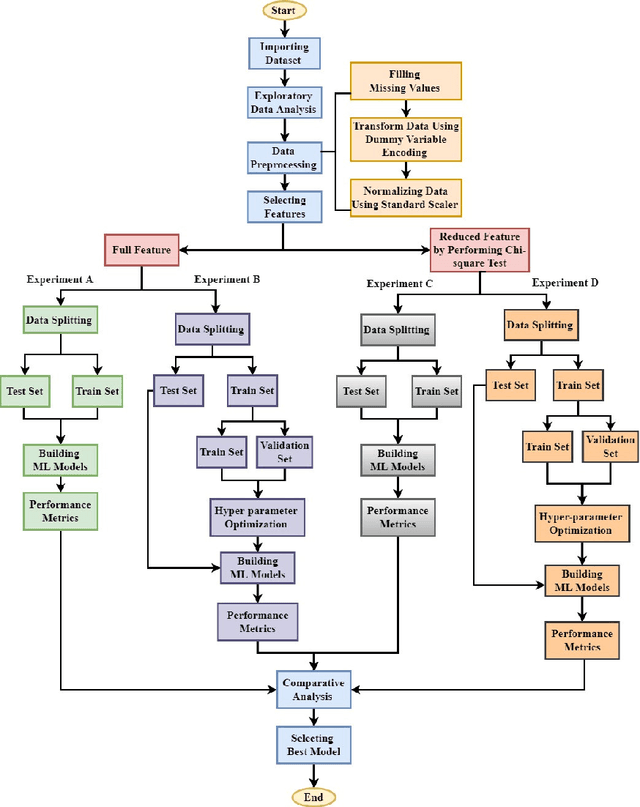Survival Prediction of Children Undergoing Hematopoietic Stem Cell Transplantation Using Different Machine Learning Classifiers by Performing Chi-squared Test and Hyper-parameter Optimization: A Retrospective Analysis
Paper and Code
Jan 22, 2022



Bone Marrow Transplant, a gradational rescue for a wide range of disorders emanating from the bone marrow, is an efficacious surgical treatment. Several risk factors, such as post-transplant illnesses, new malignancies, and even organ damage, can impair long-term survival. Therefore, technologies like Machine Learning are deployed for investigating the survival prediction of BMT receivers along with the influences that limit their resilience. In this study, an efficient survival classification model is presented in a comprehensive manner, incorporating the Chi-squared feature selection method to address the dimensionality problem and Hyper Parameter Optimization (HPO) to increase accuracy. A synthetic dataset is generated by imputing the missing values, transforming the data using dummy variable encoding, and compressing the dataset from 59 features to the 11 most correlated features using Chi-squared feature selection. The dataset was split into train and test sets at a ratio of 80:20, and the hyperparameters were optimized using Grid Search Cross-Validation. Several supervised ML methods were trained in this regard, like Decision Tree, Random Forest, Logistic Regression, K-Nearest Neighbors, Gradient Boosting Classifier, Ada Boost, and XG Boost. The simulations have been performed for both the default and optimized hyperparameters by using the original and reduced synthetic dataset. After ranking the features using the Chi-squared test, it was observed that the top 11 features with HPO, resulted in the same accuracy of prediction (94.73%) as the entire dataset with default parameters. Moreover, this approach requires less time and resources for predicting the survivability of children undergoing BMT. Hence, the proposed approach may aid in the development of a computer-aided diagnostic system with satisfactory accuracy and minimal computation time by utilizing medical data records.
 Add to Chrome
Add to Chrome Add to Firefox
Add to Firefox Add to Edge
Add to Edge